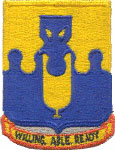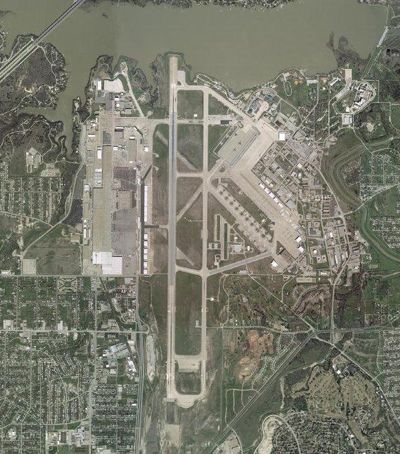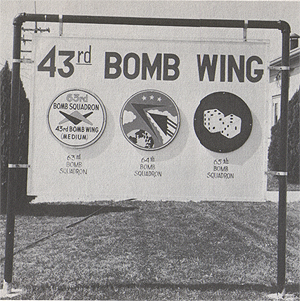The 43rd Bomb Wing
 The 43rd Bomb Wing was SAC's first supersonic bombardment wing. Equipped first with B-29s, then with B-50s,
and later to B-47 bombers, and from B-29 to KB-29 to KC-97 to KC-135 tankers, the wing trained, conducted
long-range test missions and set new flight records.
The 43rd Bomb Wing was SAC's first supersonic bombardment wing. Equipped first with B-29s, then with B-50s,
and later to B-47 bombers, and from B-29 to KB-29 to KC-97 to KC-135 tankers, the wing trained, conducted
long-range test missions and set new flight records.
The wing traces its roots back to the 43rd Bombardment Group (Heavy), which was constituted Nov. 20, 1940,
and activated Jan. 15, 1941, at Langley Field, Va., a little more than a month after the Japanese attack on
Pearl Harbor. The wing first began training and flying some antisubmarine patrols along the New England
coast with B-17, B-18, A-29 and LB-30 aircraft.In February 1942, it moved to the southwest Pacific and was
assigned to Fifth Air Force, where it would operate from August 1942 to Nov. 1944. First equipped with B-17s
and later converting to the B-24 in mid-1943, the 43rd operated from bases in Australia, New Guinea and Owi
Island, making numerous attacks on Japanese shipping in the Netherlands East Indies and the Bismarck
Archipelago. The group also experimented with skip bombing during this time and used this method for some
shipping strikes, including attacks on Japanese vessels during the Battle of the Bismarck Sea March 2-4,
1943, in which repeated air attacks destroyed a large enemy convoy carrying reinforcements to New Guinea.
First organized as the 43rd Bombardment Wing, Very Heavy, on 17 November 1947, the new unit trained in
strategic bombing with B-29 bombers at Davis-Monthan AFB, Arizona. From November 1947 through December 1948,
the unit served as a double-sized wing controlling the tactical and support components from another SAC wing.
In July 1948, the unit was redesignated as the 43rd Bombardment Wing (Medium).
Under the leadership of Colonel James C. Selser, Jr., the wing received the first B-50 aircraft in the USAF
inventory in 1948. A year later, the unit expanded its mission to include air refueling and added KB-29s to
its roster. Aircrews from the 43rd set records with all three aircraft.
On 22 July 1948, three B-29s set out from Davis-Monthan AFB on a planned 14-day trip around the world. The
crash of one B-29 delayed the trip one day, but the remaining aircraft completed the trip in a record 15
days. The 20,000-mile flight required eight stops along the way and took 103 hours, 50 minutes of flying
time to complete. Though impressive for the day, the 43rd accomplished a greater feat the next year.
On 2 March 1949, the Lucky Lady II, a B-50A (serial number 46-010) of the 43rd Bombardment Group, completed
the first nonstop round-the-world flight, having covered 23,452 miles in 94 hours and 1 minute - starting
on 26 February 1949. Lucky Lady II was refueled four times in the air by KB-29 tankers of the 43rd Air
Refueling Squadron, demonstrating the effectiveness of air refueling to the world. For this outstanding
flight, the Lucky Lady II crew received the Mackay Trophy, given annually by the National Aeronautic
Association for the outstanding flight of the year, and the Air Age Trophy, an Air Force Association award,
given each year in recognition of significant contributions to the public understanding of the air age.
The wing continued its strategic bombing and air refueling missions into the 1950s. 43rd crews in two KB-29s
earned the first combat sortie credits for tankers when they refueled an RF-80 over Korea on 28 September
1951. Two years later the wing replaced the KB-29s with KC-97s.
B-47 Stratojet
In 1953 the wing transitioned into the jet age with the replacement of B-50s with B-47s. As chance would have
it, a 43rd crew did not wait long to set a record with the new Stratojet. On 17 November 1954, Colonel David
A. Burchinal, 43rd Bomb Wing Commander, took off from Sidi Slimane, Morocco, in his B-47. Colonel Burchinal
planned to join up with the rest of the 43rd on a training rotation at Fairford RAF Station, England. As he
approached the English base, Colonel Burchinal encountered inclement weather, which prevented his landing.
The B-47 flew back to Sidi Slimane and discovered bad weather there, too. With no other options, the B-47
crew arranged for air refuelings until the weather cleared up at one of the locations. After nine inflight
refuelings and 47 hours 35 minutes in the air, the Stratojet was able to land at Fairford RAF Station. During
its time aloft, the bomber traveled 21,163 miles and shattered the previous jet endurance record. Recognizing
the 43rd Bomb Wing's history of record breaking and firsts, the Strategic Air Command (SAC) selected the 43rd
to fly the command's newest bomber, the B-58.

Carswell AFB from the air
B-58 Hustler
Its transition to B-58 Hustlers required the wing to move to Carswell Air Force Base, Texas, in March 1960.
The 43rd received the first B-58 in the Air Force on 1 August of that year. After the wing added the Hustler
to its inventory, it conducted Category II and III evaluations with the new bomber. The 43rd also operated a
school to train SAC aircrews in the B-58. Once they began flying, it did not take 43rd aircrews long to start
setting records with supersonic bomber.
On 12 January 1961, Major Henry J. Deutschendorf commanded a B-58 crew from the 43rd that set out to break six
flight records; five of which the Soviet Union held. The Hustler flew two laps around a course with Edwards AFB,
California, at one end and Yuma, Arizona, at the other. The bomber set three speed records over the 1000
kilometer (km) course with a 2000 kilogram (kg), 1000 kg, and 0 kg payload -averaging 1,200.194 miles per hour
(mph) in each category. The crew managed an average speed of 1,061.88 mph in each of the same payload categories
over the 2000 km course. This flight set the pace for the 43rd with the B-58.
Crews set two more flight records with their Hustlers in 1961. On 10 May, Major Elmer E. Murphy flew his Hustler
669.4 miles in 30 minutes 45 seconds. Averaging 1,302 mph, Major Bleriot set a new record for sustained speed
and earned France's Bleriot Cup. Sixteen days later a Hustler flew from New York City to Paris, France in 3
hours, 19 minutes, and 41 seconds. The B-58 averaged 1,089 mph along the 4,612 mile course and completed in
1/10th the time it took Charles Lindbergh in 1927. This transatlantic flight earned the crew the seventh Mackay
Trophy and the Harmon International Trophy. Tragically, the crew was killed when their B-58 crashed on 3 June
at the Paris Air Show. Though saddened by the loss, crews from the 43rd continued to set records with the Hustler.
Captain Robert G. Sowers piloted a B-58 that set out to break three speed records on 5 March 1962. Referred to
as Operation Heat Rise, the 43rd Bomb Wing B-58 flew from New York to Los Angeles and back to New York in 4
hours, 41 minutes, and 14.98 seconds. The crew took the bomber from New York to Los Angeles in two hours, 15
minutes, and 50.8 seconds -beating the sun across the United States. The return trip took 2 hours and 58.71
seconds, averaging 1,214.65 mph. All three crewmen earned the Mackay Trophy, the Bendix Trophy, Distinguished
Flying Crosses, and congratulations from President John F. Kennedy.
After July 1961, the wing continued further B-58 evaluations until June 1962. From then until the close of
1969 the wing served as one of two SAC B-58 wings with a strategic bombardment mission. Additionally, from
August 1964 until its inactivation in January 1970, the wing controlled a KC-135 refueling squadron.
One of the last things the wing did while at Carswell AFB took place on 28 March 1964, the day after a major
earthquake devastated Alaska. Headquarters USAF tasked the 43rd to provide it with photographs of the region
hit by the quake. Members of the 43rd flew two B-58s the 5,751 miles to Alaska and back, processed the film,
and then delivered the pictures to Washington DC 14.5 hours after the wing received the request. Six months
later the 43rd Bomb Wing moved to Little Rock AFB, Arkansas. There it added KC-135 refuelers to its inventory.

Little Rock AFB from the air
The 43rd Bombardment Wing carried out its mission of strategic bombardment readiness and air refueling for five
and a half years at Little Rock AFB. In mid-1969, the Air Force began to retire the B-58s. While the majority
of the wing's bombers went to Davis-Monthan AFB for storage, the Air Force spared one. Aircraft 59-2458, the
Hustler that flew the record breaking round trip flight from New York to Los Angeles, was placed on display
at the Air Force Museum at Wright-Patterson AFB, Ohio. Shortly after the retirement of its last B-58, the
43rd Bombardment Wing inactivated in January 1970. However, the wing did not stay idle long.

Headquarters, 43rd Bombardment Wing, Little Rock Air Force Base
B-52 Stratofortress
The wing was inactive for approximately two months in 1970 as it moved to Andersen Air Force Base, Guam, and
reactivated as the 43rd Strategic Wing, serving its first two months there as a base support organization.
Activated on 1 April 1970 at Andersen AFB, Guam, the 43rd Strategic Wing assumed a combat role with B-52 bombers
and KC-135 refuelers. On July 1, 1970, the 43rd once again assumed a combat role, using attached aircrews and
aircraft to participate in SAC's Arc Light mission in Southeast Asia until mid-August. The wing began with only
light participation in SAC's Arc Light bombing campaign against North Vietnamese forces. The wing's participation
in Arc Light ceased when SAC made the 43rd Strategic Wing part of its worldwide nuclear alert force in August
1971. Thereafter, until February 1972, the wing used its attached resources to provide ground alert at Andersen
Air Force Base for quick response, if and when needed.
From February 1972 until August 1973, the wing again was engaged in the Southeast Asia conflict, and from July
1972 to November 1973, all of its base and support components were temporarily under control of other
organizations, permitting the 43rd to concentrate on its combat mission.
In response to increased aggression by the North, SAC initiated Operation Bullet Shot. Bullet Shot resulted
in the build up of B-52 forces at Andersen AFB to carry out increased bombing missions. At the peak of the
operation, 150 B-52s operated as part of the 43rd, making it the largest unit in the USAF. These bombers
participated in bombing raids against enemy targets all over Vietnam, including north of the demilitarized
zone, until President Richard M. Nixon ordered a cessation to the aggressive bombing efforts. President Nixon
gave that order when it appeared that the Paris Peace Talks were resulting in a possible agreement. However,
when the communist forces took advantage of the bombing halt by increasing their operations tempo, President
Nixon gave the order to execute Linebacker II.
Linebacker II involved the heavy application of air power against North Vietnamese supply routes to convince
North Vietnam to return to the negotiating table. On 18 December 1972, the 43rd kicked off the 11-day offensive
when it launched 33 B-52s against an airfield north of Hanoi. In all, the 43rd flew 170 sorties during
Linebacker II. The success of the operation was not without cost to the wing. The 43rd lost two B-52s and four
others received damage as a result of surface-to-air missiles.
Combat operations ceased in Vietnam in January 1973, and in Cambodia in mid-August 1973. North Vietnam and the
United States signed a cease-fire agreement on 28 January 1973. Though missions over Vietnam ended, the 43rd's
combat role continued. At the request of the Royal Laotian Government, the 43rd bombed communist insurgents
throughout Northern and Southern Laos. On 22 February the Pathet Lao agreed to a cease-fire with the Laotian
government, officially ending the wing's combat role in that country. However, one other government in Southeast
Asia requested military assistance from the United States.
In early 1973 the Khmer Rouge increased its efforts to take control of Cambodia. At the request of that country's
government, B-52s from Andersen AFB Guam bombed enemy strongholds throughout Southeast Cambodia. These actions
continued over the next six months until President Nixon ordered a cease to US military action in Southeast
Asia after 15 August. On 11 August, 16 B-52s carried out the last bombing raids of the 43rd to date.
With the official end of combat operations in Southeast Asia, the 43rd switched from a conventional bombing
mission to one of peacetime nuclear deterrence. By early 1974, the wing was back on a peacetime footing,
providing routine training and ground alert with B-52 and KC-135 aircraft, the latter provided by other SAC
organizations on loan. During 1975, the 43rd Wing provided logistical and medical support for many thousands
of Vietnam refugees who were evacuated from their homeland and were temporarily at Guam awaiting resettlement.
Since 1974, the wing trained to remain proficient in strategic and conventional warfare capabilities. It also
controlled temporarily assigned tankers and crews participating in the Pacific (formerly Andersen) Tanker
Task Force that supported SAC operations in the western Pacific, tactical fighter ferry movements and air
refueling, and other training requirements.
During the period after the war the wing provided humanitarian assistance to Vietnamese refugees on two
separate occasions in 1974 and 1978. In 1976, the wing conducted low level show-of-force missions over the
Republic of Korea after North Korea murdered two US Army officers in Panmunjon. In 1977 the 43rd added a
conventional mission to its post-Vietnam strategic operation. From that point on, the wing trained its aircrews
in sea surveillance, aerial mine laying, and anti-ship warfare.
The 43rd Strategic Wing evolved with the changing world order in the 1980's. In 1983 the wing replaced its B-52Ds
with B-52Gs. With the upgraded bombers the wing accepted its first Harpoon anti-ship missile, the second US Air
Force unit to do so.
In July 1986 the wing activated the 65th Strategic Squadron to control the temporary duty air refueling forces
and the wing returned to a bombardment designation in November 1986. SAC redesignated the 43rd Strategic Wing
to the 43rd Bombardment Wing.
With the name change the wing began a transition from a nuclear alert unit to SAC's lead contingency wing. The
wing officially traded in its nuclear mission for its direct action role in October 1988. One year later, the
bomb wing began redeploying to stateside bases, and Andersen transitioned from SAC to Pacific Air Forces with
the activation of the 633rd Air Base Wing. In early 1990 President George H. W. Bush signed an executive order
directing the inactivation of the 43rd, which it did in September 1990.
The wing was once again inactivated, and it then moved to Malmstrom Air Force Base, Mont., where it was
reactivated and redesignated as the 43rd Air Refueling Wing on 01 June 1992. In July 1994, the wing was once
again designated as a group, which became a tenant unit at Malmstrom under Air Mobility Command. The 43rd Air
Refueling Wing replaced the 301st Air Refueling Wing as the primary flying unit at Malmstrom AFB, Montana.
With its KC-135Rs, the 43rd provided air refueling support to US and allied forces around the world. The 43rd
supported Operations Southern Watch (Saudi Arabia), Provide Comfort (Turkey), Deny Flight (Boznia-Herzegovnia),
Uphold Democracy (Haiti), and Support Hope (Rwanda).
In October 1996, the 43rd inactivated when its tanker aircraft were moved to MacDill Air Force Base, Fla. Soon
after, the 43rd was reactivated and redesignated as an airlift wing at Pope Air Force Base after the Air Force
announced the realignment of stateside C-130s from Air Combat Command to Air Mobility Command.
Lineage of the 43rd BW
Established as 43rd Bombardment Wing, Very Heavy
Organized 17 Nov 1947
Discontinued 1 Aug 1948
Redesignated as 43rd Bombardment Wing, Medium
Activated 1 Aug 1948
Inactivated 31 Jan 1970
Redesignated as 43rd Strategic Wing
Activated 1 Apr 1970
Redesignated as 43rd Bombardment Wing, Heavy
Activated 4 Nov 1986
Inactivated 30 Sep 1990
Activated as 43rd Air Refueling Wing
Activated 1 Jun 1992
Redesignated as 43rd Air Refueling Group
Activated 1 Jul 1994
Inactivated 30 Sep 1996
Redesignated as 43rd Airlift Wing
Activated 1 Apr 1997
 Peace was our Profession... Peace was our Profession...
Copyright © 1994-2025
Alex P. Brewer, Jr. and Randy A. Brewer
The B-58 Hustler Page
B-58.com
|

